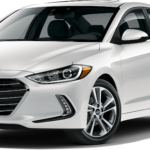Hyundai i30 Oil Type
Select Your Model Year...
Choose the appropriate model year for the Hyundai i30 you are trying to find the oil type & capacity for from the list below.
Hyundai i30

- Manufacturer: Hyundai
- Data Source: Owner's Manual
You can find 88 different trims for the Hyundai i30 and their corresponding recommended oil type.
The years available stretch from 2007 through to 2024 and to view the oil type and capacity you just click to expand.
The Hyundai i30 is the name given in Europe for what the North American market refers to as the Hyundai Elantra Touring and/or the Elantra GT, depending on model year. It’s a family compact that shares a platform with the Kia Ceed, but has also been built as a 5-door hatchback, 5-door wagon, and 5-door liftback from 2017.
The first generation of Hyundai i30 arrived on the scene back in 2007, but was upgraded to a second generation in 2011, and then to its current third generation in 2016. The latest versions are a facelifted model first released back in 2020. The third-generation models are available as a hatchback, wagon, and liftback, which is marketed as the i30 Fastback.
Latest-generation models have been offered with a number of different engine options in both regular gasoline and diesel, with displacements from 1-liter to 2-liter for gasoline, and up to 1.6-liter in diesel form.
The most powerful Hyundai i30 powertrain offered is the 2-liter Theta II T-GDi gasoline engine, which outputs up to 276-hp and 289 lb-ft of torque. A sporty version of the i30 bearing the Hyundai sports model “N” badge was also released alongside the third-generation i30 models.
In 2020, the Hyundai i30 received a facelift, getting slimmer front LED headlights, 18-inch alloys, a 7-inch digital instrument cluster in the driver cockpit that was also paired with a more impressive 10.25-inch infotainment touchscreen display. Mild hybrid technology (48 volts) was also introduced into some of the powertrains, namely the 1-liter T-GDI, and the 1.5-liter T-GDI.
Hyundai’s i30 has enjoyed strong sales in both Europe and Australia, where its economical pricing and running costs go down well, particularly as both gas costs and road tax fees are a lot higher than those paid in North America.



